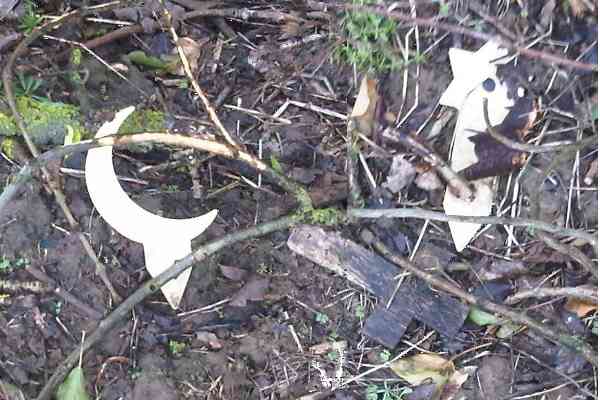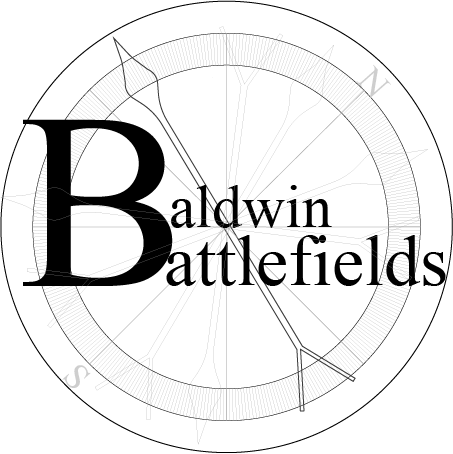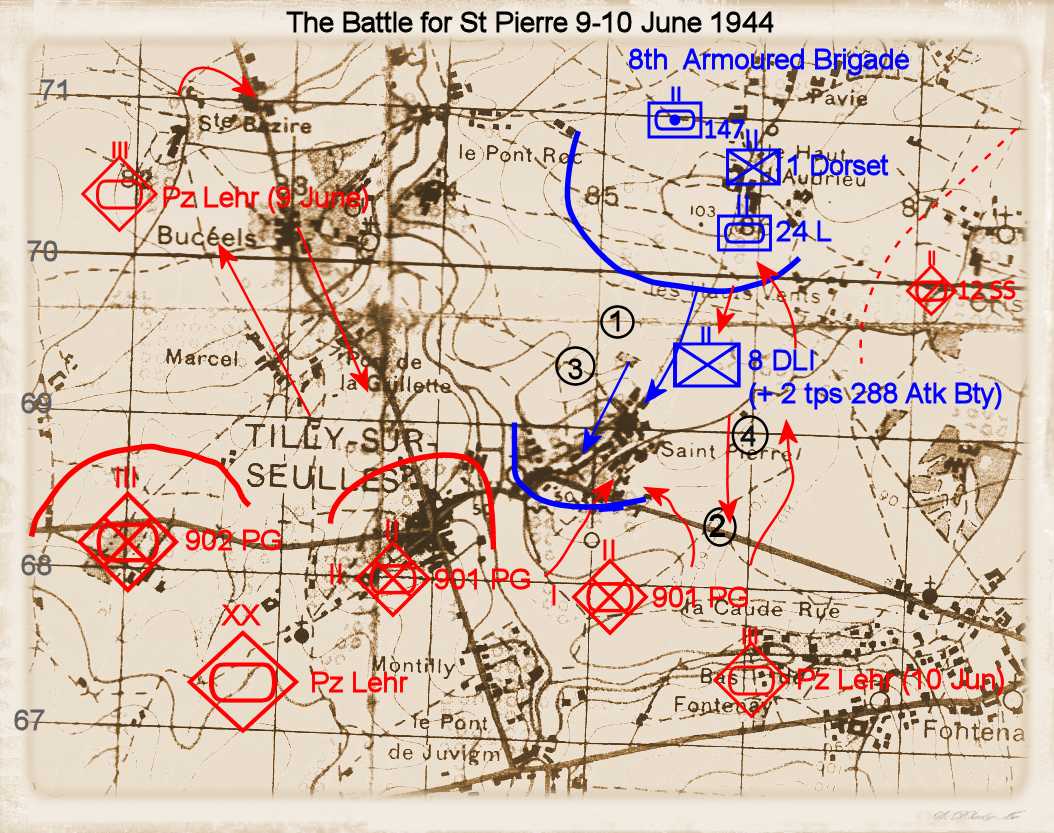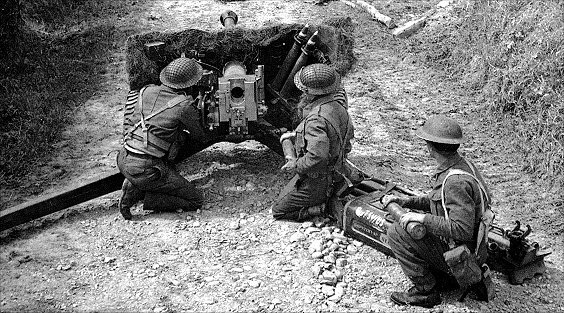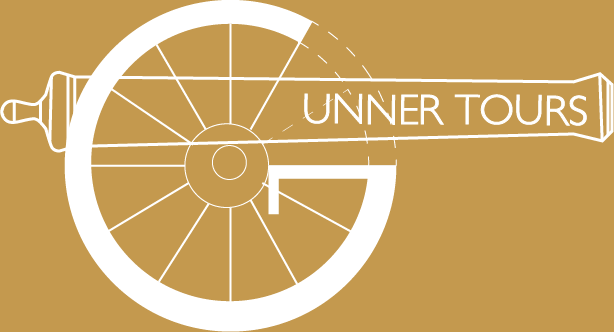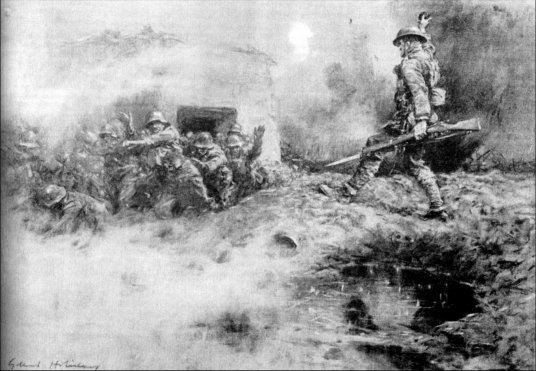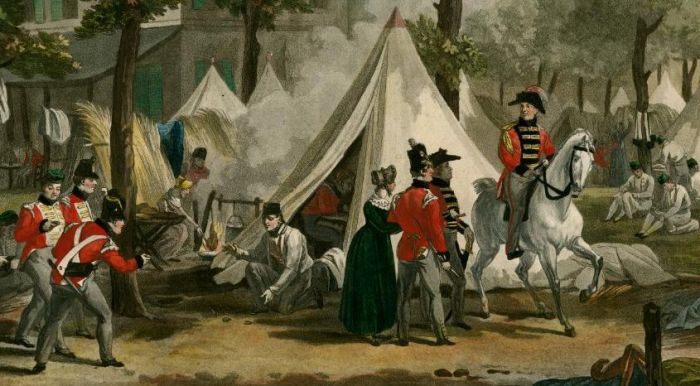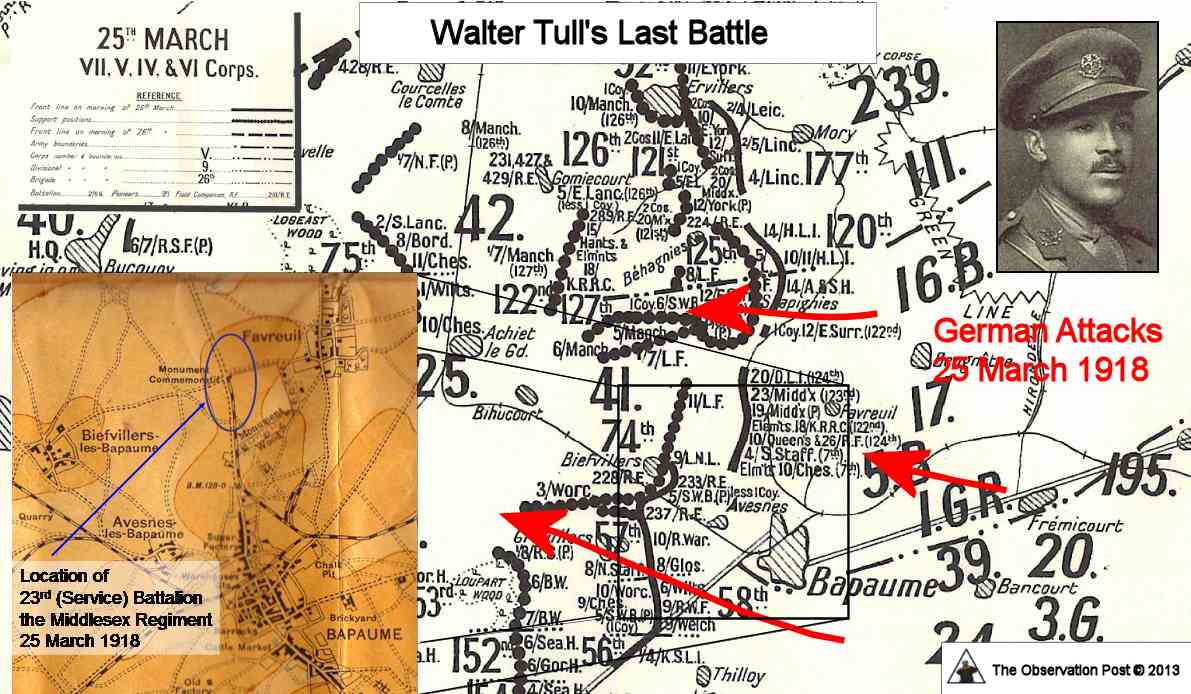
Walter Tull was a man who is famous for being the first black outfield footballer to play in the Football league and for overcoming the barriers of race and class to be commissioned as an officer in the Infantry in the British Army in the Great War.
In recent decades he has been championed as a historic hero and a role model for young black Britons. Philip Vassili has championed his memory, written a biography and a play and led a call for him to be awarded a posthumous Military Cross.
I first spoke to Philip Vassili in 2007 when I was researching Walter Tull for a visit to the battlefields of the Western Front by Henry Compton School, Fulham. This school had won funding from the TV show “Fortune: Million Pound Giveaway” to visit the Battlefields of the Great War. Duncan Bannatyne had said that these students would get nothing from a visit to the battlefields, but the deciding support was from Lord Archer.
Here is the show
And here is a video made by the boys themselves. The video originally had an audio soundtrack – but its been disabled for copyright reasons.
Bishop Henry Compton School in Fulham was a school for boys aged 11-16. It was founded as a board school in the last quarter of the nineteenth century. The then Head of History Dan Lyndon showed me the records from the Great War. In the early years of the 20th Century the school educated boys to start their working lives in crafts and trades. Dan told me that he wanted to follow the stories of the ex pupils and teachers from their school. (One of the school’s alumni was awarded a VC for his actions in Burma in 1944, but that is another story). Dan also wanted to follow the story of Walter Tull, who the boys studied in Black British Month, as a focus for the key stage 3 topics on trench warfare.
Henry Compton School was a school that white middle class parents would spend tens of thousands in school fees or hundreds of thousands on a house to avoid. 30 different languages were spoken by the students attending the school, which had no sixth form. Many of the boys were refugees from across the zones of modern conflict, including four Afghans, a Palestinian and a Libyan. The boys were not angels. One came with a personal minder. However, this was not a failing school. The staff were very impressive. The teachers were committed and passionate about their subjects and students. Mr Ranji the Headmaster came on the tour and had a way of saying something very quietly that turned some boisterous or stroppy teenager into docility itself – a kind of “thug whisperer”.
The personal stories of some of the boys made an impression on me. The mother of one the Afghan boys clearly hadn’t understood what the trip offered and dispatched her son with a four day supply of kebabs and rice. I asked another whether his family were planning to go back to Afghanistan. The boy told me that his uncle had been and said that all was there was the trace of the house in the dust. When one boy asked me why the big hole in the ground was called a mine because where he was from mines are things you mustn’t stand on. I had to turn away for a minute. It brought it home to me how fortunate I am as a British parent that whatever dangers my children face growing up in London, anti-personnel mines aren’t one of them.
We visited the Western front to look at the soldiers’ experience of the war. We visited museums and trenches, did a bit of re-enactment. The school played along and organised themselves as sections of “the Fulham pals” platoon. We played a bit of military discipline with sections competing to be the first “On parade” We made some local connections to Fulham. We found the graves of a student and a teacher who were on the school’s roll of honour. We visited Hill 60 where a Fulham boy, Edward Dwyer, born a few streets from the school, had carried out the deeds for which he was awarded the Victoria Cross.
The one question that everyone wanted to know the answer to was “What did people like me do in the First World War?” The Menin Gate supplied a lot of answers with the names of soldiers from all over the Indian subcontinent and the West Indies. The Indian army memorial to the missing, the Portuguese cemetery at Neuve Chapelle and Russian graves in Arras supplied other links. Some boys made a bee line for the computer terminals at the Thiepval memorial to search for their own names on the Commonwealth War Graves Database. The Libyan boy proudly showed me the record that revealed that someone of his name had died serving Britain in the Libyan Frontier force in 1941. Was this tokenism? It was obvious that these were only tiny exceptional examples among the massed ranks of the Great War dead. No one can pretend that Britain of the Great War was as diverse as it is now, but there is a big psychological difference between “someone like me” and “no one like me”.
The boys were fascinated by Walter Tull. They had learned about him in lessons. As a footballer and soldier he was a hero and they obviously identified with him and his story. We visited the memorial to the Missing at Arras, and found Walter Tull’s name. They held a minute’s silence and one of the boys read the details of the CWGC reference.
We also found the area where he was killed in March 1918. The Regimental History mentioned that his unit was sited around the monument to the 1870 battle.

We held an act of Remembrance in a field across the road from the memorial. It is not a precise location, but it has to be within a few hundred metres and Tull’s body has never been discovered. The boys laid crosses, stars of David and crescents, which were still there a couple of years ago
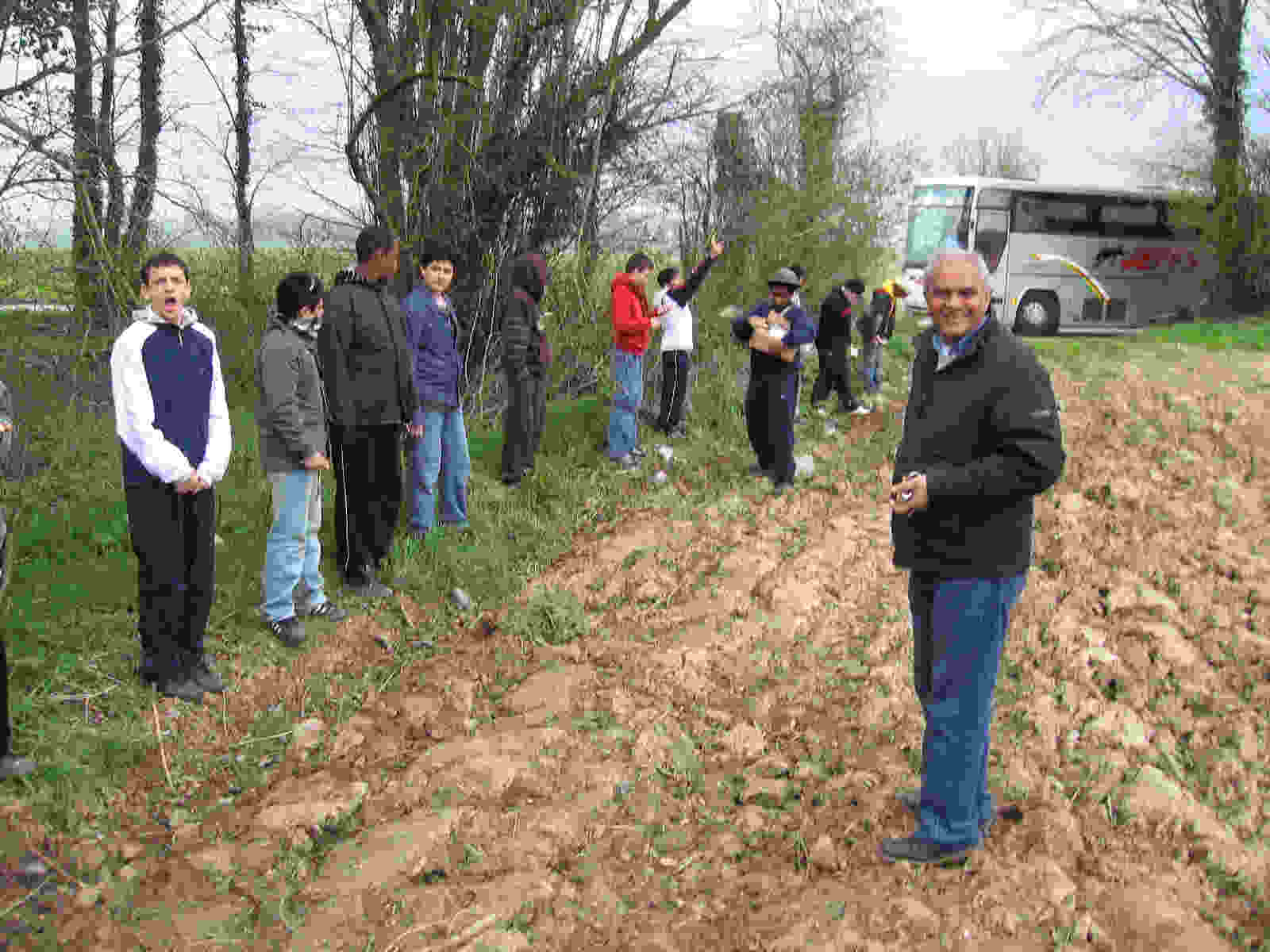
Did they get much from the tour? They were certainly engaged and asked some very lively questions of me and local guides and speakers. Some of the discussion put me as the guide on the spot. I vividly recall being asked about whether the Germans were anti-semitic in the Great War and the part that the Great War played in the rise of Hitler and the Nazis. One of the major benefits was in terms of citizenship objectives. Taking part in an trip to a foreign country behaving yourself in restaurants and hotels is all part of being a good citizen. These boys were good ambassadors of their school and created a positive impression with the people they met. Individual identity is an issue, and one of the objectives was to explore the story of Londoners in the Great War. At the end of the Tour the answer to the question “are you proud to be Londoners” was answered with a massive roar. Had this been 1914 this generation of “Fulham Pals” would have done their bit.
These boys didn’t ask to be brought up in London, yet must live in a society where at least some people are asking the question “what is your right to be here?” The answer “Because someone like me died for this country” is a powerful argument, and one that these boys had witnessed. These boys will now be in their twenties. Many of them are young black or Moslem men, two groups that are perceived as being most at risk of falling under the influence of criminal subculture or of Islamic extremism. The story of Walter Tull matters because he is a symbol and a role model that shows it is possible to succeed and cross the barriers of race and background.
You can see the boys and their tour for yourself. Only the first part of this video is available on Youtube. The film was shot by the boys themselves and edited by Dan Lyndon. The second half which included the visit to the site of his last action and the Arras memorial isn’t available publicly.
Walter Tull in the Great War
During the First World War Tull served in both Footballers’ Battalions of the Middlesex Regiment, 17th and 23rd, rising to the rank of sergeant and fighting in the Battle of the Somme in 1916. When Tull was commissioned as Second Lieutenant on 30 May 1917 (still in the Middlesex Regiment),he became the first black/mixed race combat officer in the British Army, despite the 1914 Manual of Military Law specifically excluding Negroes/Mulattos from exercising actual command as officers. He fought in six major battles: Battle of Ancre, November 1916 (first Battle of the Somme); Battle of Messines, June 1917; 3rd Battle of Ypres, July–August 1917 (Passchendaele, Menin Road Bridge); September 1917; Second Battle of the Somme, St.Quentin, March 1918; Battle of Bapaume, March 1918 (2nd Somme).
Walter Tull is remembered at the Arras Memorial, Bay 7, for those who have no known grave.
Another interesting fact about Walter Tull is that his brother also triumphed over barriers of class, birth and race. The two brothers were separated on the death of their father. Their mother died, and the father remarried. On his death the step-mother put both boys into orphanages. Walter ended up in the East End of London, Edward in Glasgow. Walter became England’s first professional outfield footballer while Edward became Glasgow’s first black dentist. Its remarkable that both brothers joined the officers mess/professional classes having a background in an orphanage, without any consideration of race. The Tull boys’ success says much about them and for the care offered by the orphanages which brought them up. That is the story which has been missed.
Why Walter Tull Should Not be Awarded a Posthumous Military Cross
The campaign for him to be awarded a posthumous Military Cross is misguided and misplaced. Walter Tull was an admirable man and is deservedly a role model. He was a victim – but principally of violent death at the hands of the Kaisers Army. Portraying him as the victim of racism because he did not get a gallantry award is a slur on his parent Regiment. The Middlesex Regiment deserve credit for making an exception to the discrimination institutionalised in Kings Regulations and commissioning him.
It would be a mistake to retrospectively honour Walter Tull because of his race. .Walter Tull is far better known than any of the 37,000 officers awarded the Military Cross during the Great War. How many people can name any MC holders? There was no bar to non European officers or soldiers from receiving awards, such as the DFC awarded to Lieutenant Indra Lal Roy, the Indian air ace or the VC to Mir Dast, the Indian Army Officer. Walter Tull was one of the countless brave men who were not awarded a medal for bravery. It is far better, in our celebrity obsessed times, to use Tull’s story as a reminder that the awards systems are imperfect. The exhortation is to Remember them – all and unreservedly .
Some Better Causes for Moral Outrage
There are other more notable victims of racism from the Great War than Walter Tull. The Chinese and South African labourers, recruited on contractual terms which bordered on slavery. The non-European students in England denied the opportunity to serve as British officers are more deserving of sympathy. These include Fijian hero Ratu Sir Lala Sukuna Rahave, wounded while serving in the French Foreign Legion and Lt Hardutt Singh Malik, initially refused a commission in the Royal Flying Corps.
The campaigners should also consider some other aspects of the Walter Tull story. Walter Tull lived at a time when only a small proportion of the population could vote, and before there was much of a welfare state. What proportion of the alumni from Britain’s modern care system currently join the officers mess, university or the professions?
A second issue arises from the comparison between the Board school that stood in Kingwood Road, Fulham and the schools on that site now. The Board school was geared towards a technical education that would send its alumni into craft and mechanical jobs in the working world. To what extent have the changes of the last decade done anything to help the boys who do not expect to go to university? Or has the drive for parental choice through Academies and Free Schools make it easier to ignore them?
